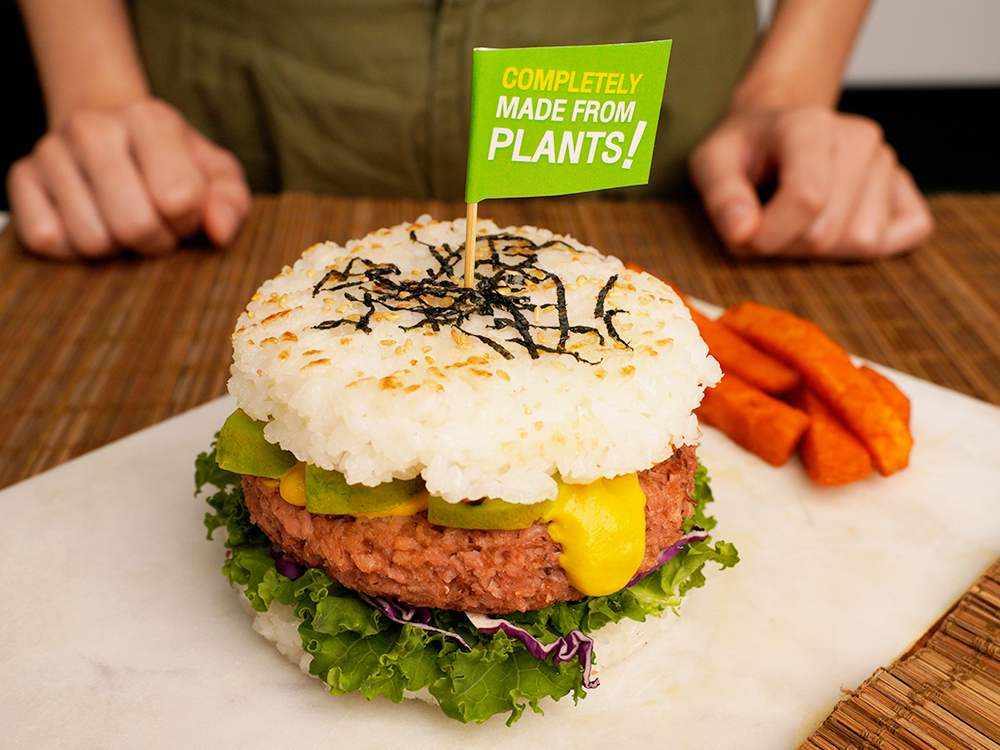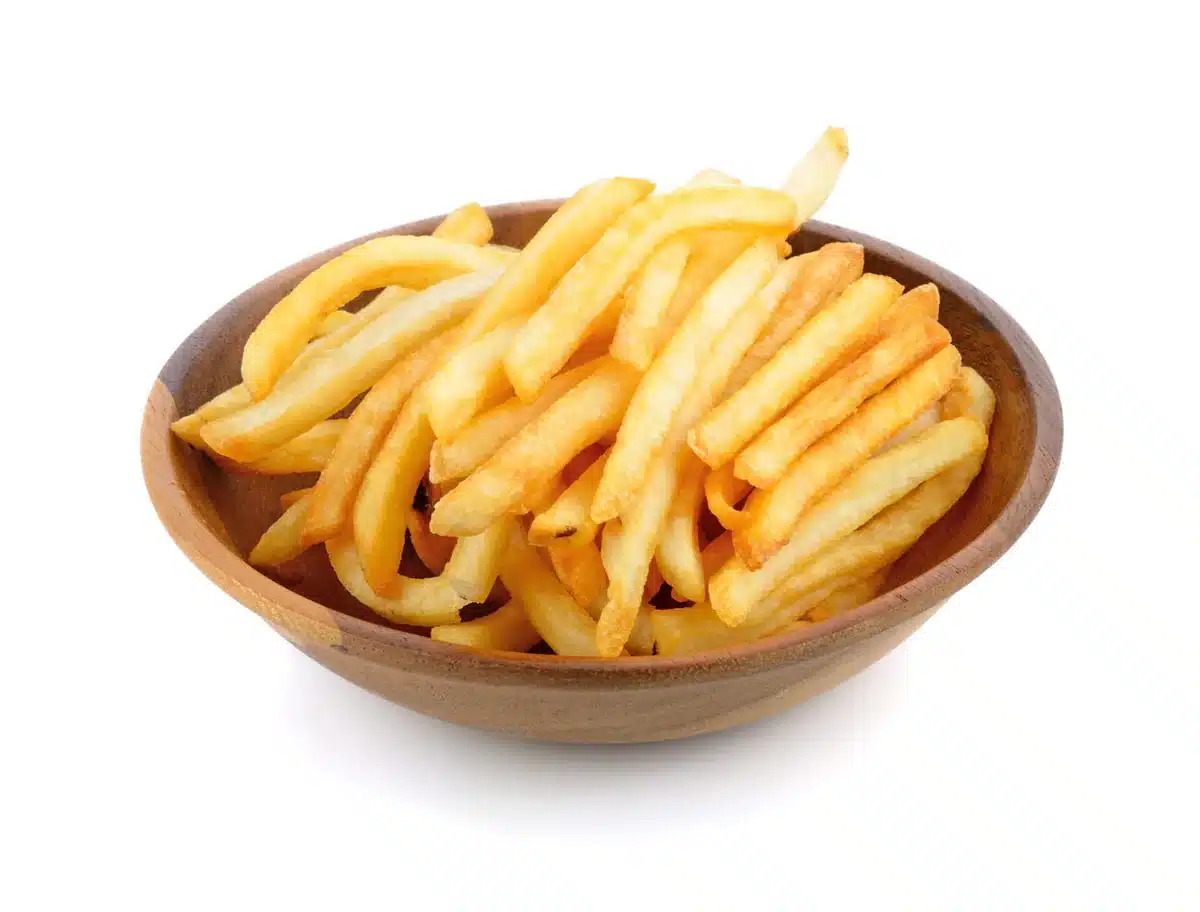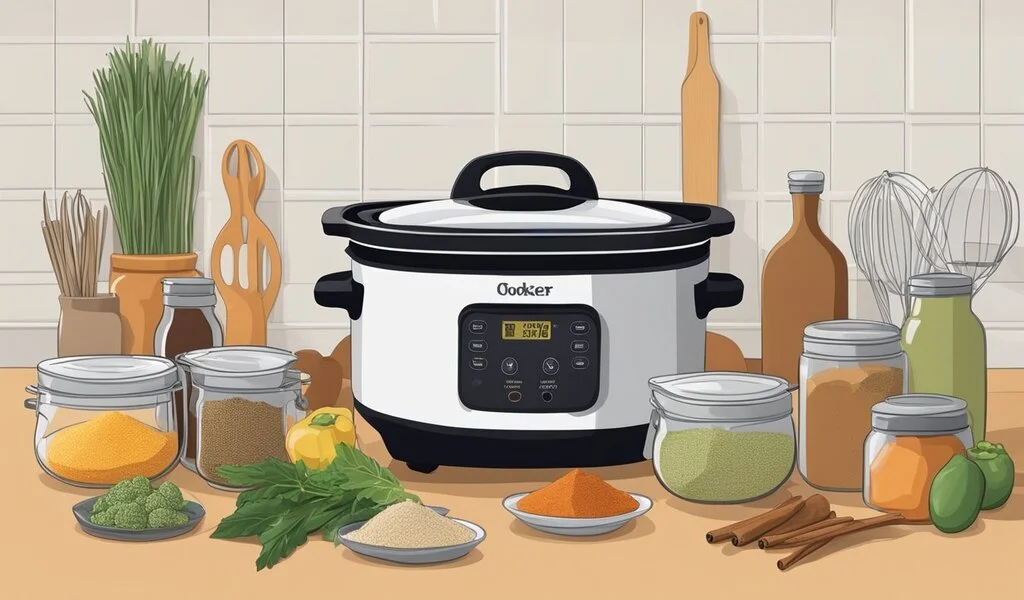Food
Future-Proofing Asia’s Food System By Localizing Plant-Based Proteins

Around the world, demand for proteins is skyrocketing. In Asia alone, economic growth and rising incomes are projected to increase consumers’ appetite for conventional meat and seafood by 33 percent by 2030—compared to 2017—and 78 percent by 2050. But that growth is on a high-speed collision course with our planetary limits.
Even at its current levels, conventional meat, dairy, and egg production has contributed to unprecedented water depletion, air pollution, greenhouse gas emissions, and land usage. For perspective, of the four billion hectares of land currently used for agriculture, a staggering 75 percent are used to grow crops to feed to chickens and pigs or to graze cows and other farmed animals. That’s a land mass as large as China, plus India, times two, plus Indonesia!
Now imagine how much more land and other finite resources will be needed if animal-protein consumption continues to rise. This looming clash between rising food demand and rapid natural-resource depletion has no doubt motivated many forward-thinking companies—including global powerhouses like Thai Union—to explore the vast oceans of opportunity in plant-based proteins.
Plant-based meat, seafood, egg, and dairy products seek to deliver the familiar textures and flavours consumers crave, with a fraction of the carbon footprint—a quintessential win-win.

Plant-based protein foods
Studies show that Thai consumers are particularly enthusiastic about shifting our agricultural system towards more climate-resilient foods. When multinational research firm GlobeScan surveyed 27,000 consumers in dozens of countries about whether they want meat to be made from plants or animals, a majority of Thai respondents—55 percent, among the highest anywhere in the world—said they want theirs to come from plants.
But despite soaring consumer interest in sustainable plant-based foods, local crop farmers are not yet reaping the benefits that this societal shift should deliver, and the reason is simple: look at the ingredient lists.
In 2022, 77 percent of plant-based meat products launched in Southeast Asia used soy or wheat as their protein source—ingredients primarily grown in the West.
It’s not that plant-based food producers don’t want to put local ingredients into the mix. As a new report released by the Good Food Institute APAC shows, homegrown crops like the humble mung bean—already widely cultivated across northern Thailand—have enormous untapped potential.
In addition to their mild and pleasant taste and texture, mung beans have far lower allergenicity than either soy or wheat. They are also warm-season legume crops with higher heat and drought tolerance compared to cool-season plants like chickpeas or lentils.

Mung beans for protein
In fact, mung beans have among the highest heat thresholds of all legumes, meaning that in some parts of our warming planet many commonly used ingredients may become significantly more difficult to grow, while mung beans could thrive.
So with all of these benefits, why aren’t plant-based food producers tripping over each other to buy up Thailand’s mung bean supply?
One reason is that mung beans and other regional ingredients have been woefully neglected by protein-focused research and development programmes.
Soy-producing countries, for example, have spent decades optimising that crop and driving down costs through innovative breeding programmes. As a result, producers have more than doubled how much value they get from every single acre of land. Similarly, cereal crops like wheat have nearly tripled their yield sizes over the past 50 years. Meanwhile, legumes—which include mung beans—have increased by a comparatively meager 60 percent. It’s a classic case of under-investment leading to under-utilization.
The good news is that these are still early days in the global plant-based food market’s growth. There is a brief window of time for Asian crops to get in the game—a transition that Thailand is uniquely well-positioned to lead as both a regional research hub and a mung bean producer with significant scale-up potential.
By rapidly making up lost ground on high-tech crop and food science R&D, and re-framing mung beans and other local crops as climate-resilient ingredients that can power the next generation of animal-free meat, dairy, and egg products, Thailand can ensure that local farmers get their fair share of the plant-based profits.
Ryan Huling is senior communications manager at the Good Food Institute APAC—Asia’s leading alternative protein think tank.

Food
America’s French Fry King Sounds An Alarm

Americans are revolting against McDonald’s and other fast-food establishments. This is harming French fry suppliers like Lamb Weston.
Lamb Weston, North America’s largest manufacturer of french fries and a significant supplier to fast-food chains, restaurants, and grocery stores, is closing a production facility in Washington state. Last week, the company stated that it would lay off almost 400 employees, or 4% of its workforce, and temporarily shut down manufacturing lines in response to falling customer demand.
Lamb Weston (LW) shares have plummeted 35% this year.
America’s French Fry King Sounds An Alarm
The potato giant is oversupplied at a time when demand is low. In recent years, restaurant prices have risen faster than grocery store prices, prompting shoppers to avoid fast-food establishments.
This move has had an impact on Lamb Weston because individuals are less inclined to prepare French fries at home. According to Lamb Weston, fast-food restaurants account for around 80% of all french fries consumed in the United States.
Fast-food restaurants, such as McDonald’s, are offering bargain menus to entice customers back. McDonald’s has introduced a $5 meal that contains a McDouble cheeseburger or a McChicken sandwich, small french fries, four chicken nuggets, and a small soft drink. However, these promotions are not benefiting Lamb Weston because customers are purchasing fewer portions of fries.
“Many of these promotional meal deals have consumers trading down from a medium fry to a small fry,” Lamb Weston CEO Thomas Werner stated during an earnings call last week.
Lamb Weston did not immediately reply to CNN’s request for comment.
McDonald’s, Lamb Weston’s largest customer, accounts for 13% of revenue. As McDonald’s goes, so does Lamb Weston.
America’s French Fry King Sounds An Alarm
And McDonald’s is struggling. Sales at US restaurants open at least a year declined 0.7% last quarter compared to the same period a year ago, dragged down by fewer consumers visiting the brand.
Lamb Weston is also heavily exposed to other fast-food companies, according to analyst R.J. Hottovy of analytics firm Placer.ai, in a research note to clients last week.
Customer traffic to fast-food restaurants fell 2% last quarter and 3% the prior quarter compared to the same period last year, according to Lamb Weston.
SOURCE | CNN
Food
Logan Paul And MrBeast Have A Lunchables Competitor That They Say Is Healthy

YouTube’s top stars have launched their competitor to Lunchables.
MrBeast, Logan Paul, and KSI are collaborating on a “groundbreaking new better-for-you lunch option” called Lunchly, combining all their goods into a single meal geared at their younger fans.
The all-in-one meal includes a bottle of Prime Hydration, a sports drink alternative founded by Paul and KSI that has grown in popularity; a Feastables milk chocolate bar created by MrBeast, a popular YouTube star with over 300 million subscribers; and one of three processed food options, including pizza, nachos, or turkey aand cheese with crackers.
Logan Paul And MrBeast Have A Lunchables Competitor That They Say Is Healthy
“Our ultimate goal has always been to offer not only high-quality products, but also healthier alternatives,” Lunchly cofounder Logan Paul stated in a press release. He also stated that the school lunch industry has been “dominated by Lunchables” since he was a child, and that it is “time to provide a better option for those looking for a convenient, healthier choice.”
Lunchly promises to be “healthier” since Prime contains more electrolytes than a Capri Sun in Lunchables, and Mr. Beast’s chocolate bar contains less sugar than a Kit Kat or Crunch bar.
Lunchly’s launch comes after Lunchable, owned by Kraft Heinz, announced a huge initiative last year to participate in school lunch programs. However, the company had to reformulate the components first to guarantee that the items met regulatory rules, which included incorporating fresh fruit into their meals.
Consumer Reports reported in 2024 that it recently studied the nutritional profiles of two Lunchables kits supplied in schools and discovered that they contain significantly more sodium than the Lunchables kits available in stores.
Logan Paul And MrBeast Have A Lunchables Competitor That They Say Is Healthy
Of course, KSI, Paul, and MrBeast know how to create brands, thanks partly to their devoted following. Despite government worries about the caffeine content of some of its drinks, Prime sales have risen, threatening industry leaders such as Gatorade and BodyArmor.
“Prime brings a youthful buying cohort that hasn’t had a lot pitched their way beyond traditional kids’ drinks,” Jeffrey Klineman, editor-in-chief of BevNet, previously told CNN. “Paul is significantly more intriguing to a 13-year-old than a juice box.”
SOURCE | CNN
Food
Beyond Soups and Stews: Unexpected Ways to Utilize Your 5 Litre Pressure Cooker

Pressure cookers are very popular cooking utensils for preparing soups, stews, and tenderising meats in quick time. However, their versatility and uses go far beyond these traditional uses.
If you’re trying to use your 5 litre pressure cooker differently, you are at the right place, as we are going to explore unexpected and creative ways to use this essential kitchen utensil.
Infused oils and extract
You can use your pressure cooker to prepare infused oils and extracts. To do that, you have to put the herbs, spices, or citrus peels in a jar filled with oil or alcohol. Then, seal the jar and cook under low pressure for a short time to infuse the flavours uniformly.
By this method, you can extract intense flavours in a quick time as compared to what it takes through traditional infusion methods. You can also experiment with combinations like rosemary-infused olive oil or vanilla extract for baking.
Artisanal Curd Making
You can use your pressure cooker to prepare yoghurt. To do that you have to heat the milk to a proper and specific temperature, and then cool it down before adding yoghurt culture. After that, keep the mixture in jars, seal, and ferment in the pressure cooker with the use of the yoghurt setting. And yes, after that, you will have creamy, homemade yoghurt at a much lower cost than store-bought varieties. You can add up your yoghurt, various flavours and toppings for a healthy breakfast or snack option.
Quick pickling
You can also prepare quick pickles using your pressure cooker. For doing that combine the ingredients such as vinegar, water, salt, and your choice of vegetables or fruits in the cooker.
Now, after that, cook under pressure for a few minutes to infuse the flavours rapidly.
Once it is done and cooled, your quick pickles will be ready to eat and enjoy, giving a taste of tangy flavour to sandwiches, salads, or charcuterie boards. You can do this using different spices and herbs to prepare unique flavour profiles for your pickles.
Steaming vegetables and seafood
You can use your pressure cooker’s steaming capabilities to cook vegetables and seafood very easily and quickly. To do that, you have to place a steamer basket inside the cooker, add water, and put your ingredients.
Then, after that, cook under pressure for a few minutes to keep the nutrients intact and also get the perfect tenderness. From crisp-tender asparagus to succulent shrimp, the possibilities of preparing the dishes are many. You can add different flavours using aromatic herbs, spices, and citrus zest.
Homemade bread and desserts
You can amaze your family with freshly baked bread and delicious desserts that can easily be prepared in your pressure cooker. To do that, use the cooker as a makeshift oven by placing a trivet inside and also adding water to it.
After that, you have to place your bread dough or dessert batter in a heat-proof container, cover it, and then cook under low pressure. In very little time, you will get tender bread or delicious desserts without even messing up the kitchen. You can also try various other recipes like chocolate lava cake or savoury herb bread for a delightful treat.
One-pot pasta dishes
You can easily prepare one-pot pasta dishes that are cooked perfectly in your pressure cooker. To do that you have to combine pasta, sauce, vegetables, and protein in the cooker, and also remember to check and put enough liquid for cooking. Then, seal and cook under pressure for a few minutes. This will allow the flavours to get mixed beautifully.
And with this, from classic spaghetti marinara to creamy Alfredo, your pressure cooker can do it all. You can enhance your pasta with your favourite ingredients and garnishes.
Conclusion on a pressure cooker
Cooking indeed is a creative method. Do justice to your creative culinary spirit with your 5-litre pressure cooker. Bake bread, make homemade yoghurt, and make several main dishes as well as side dishes using a wide pressure cooker.
Impress everyone and yourself! Make the best out of your culinary instincts.
SEE ALSO: The Ultimate Guide to Choosing the Perfect LED Bathroom Mirror
Post Disclaimer
The above article is sponsored content any opinions expressed in this article are those of the author and not necessarily reflect the views of CTN News- Chiang Rai Times. For detailed information about sponsored content policy click here.
-

 News3 years ago
News3 years agoLet’s Know About Ultra High Net Worth Individual
-
Entertainment2 years ago
Mabelle Prior: The Voice of Hope, Resilience, and Diversity Inspiring Generations
-

 Health4 years ago
Health4 years agoHow Much Ivermectin Should You Take?
-

 Tech2 years ago
Tech2 years agoTop Forex Brokers of 2023: Reviews and Analysis for Successful Trading
-

 Lifestyles3 years ago
Lifestyles3 years agoAries Soulmate Signs
-

 Movies2 years ago
Movies2 years agoWhat Should I Do If Disney Plus Keeps Logging Me Out of TV?
-

 Health3 years ago
Health3 years agoCan I Buy Ivermectin Without A Prescription in the USA?
-

 Learning3 years ago
Learning3 years agoVirtual Numbers: What Are They For?


